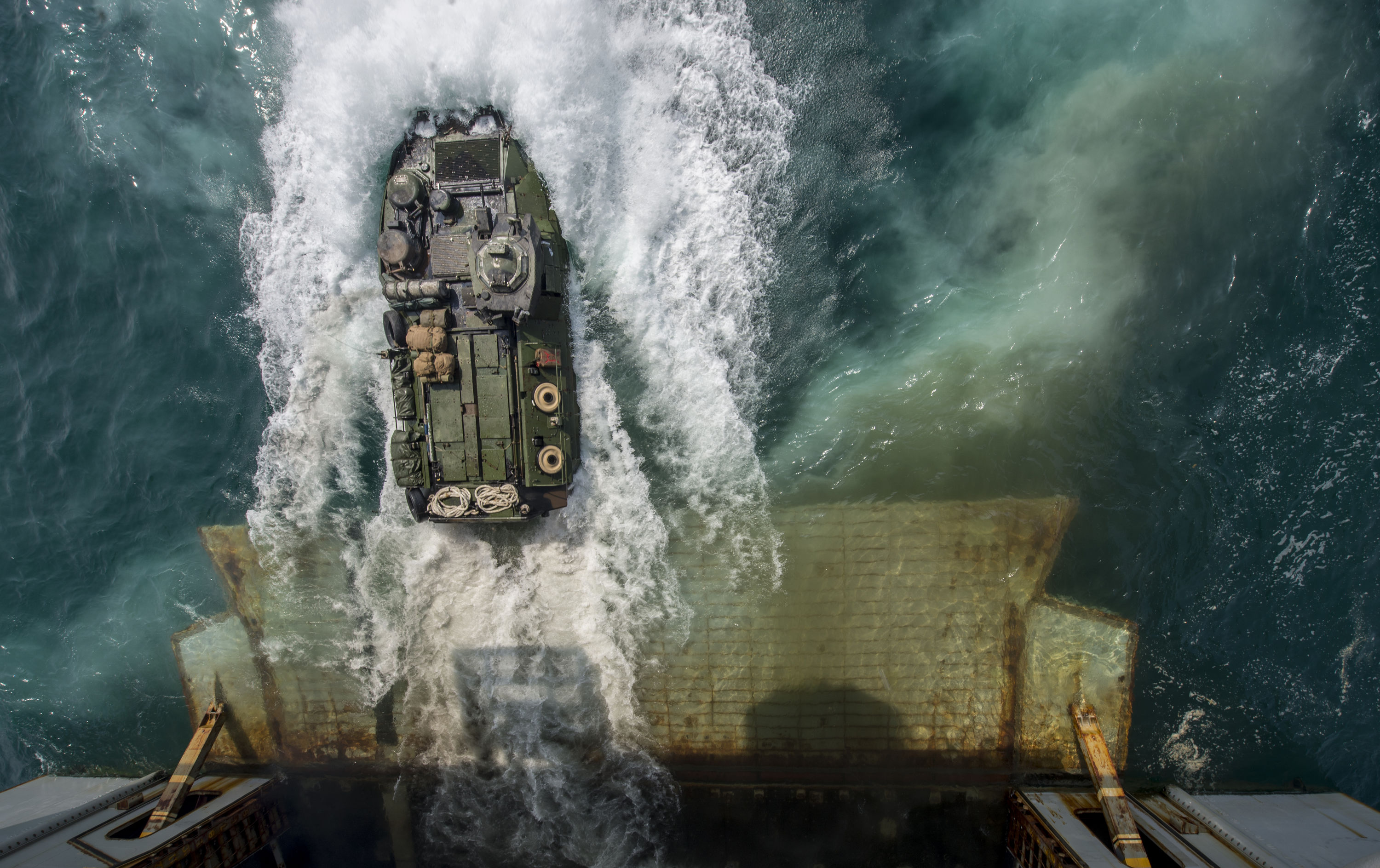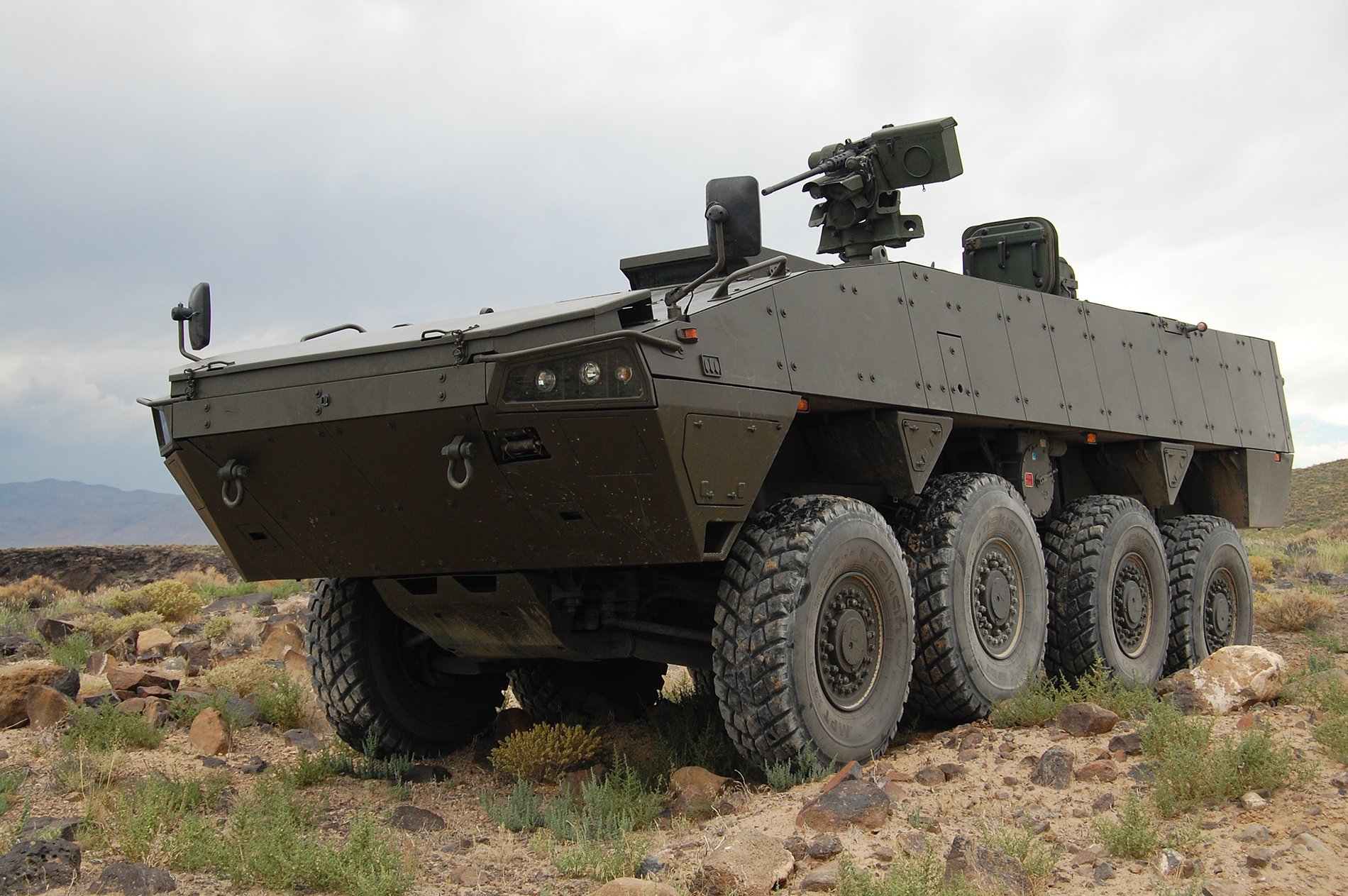
The competitors for the Marine Corps’ Amphibious Combat Vehicle (ACV) increment 1.1 are focusing on the eventual increment 1.2 capabilities – with increased swim capability and more seats – making it more likely that the two will merge together, top service officials have said this week.
On Tuesday, Marine Corps Commandant Gen. Joseph Dunford told the Senate Armed Services Committee (SASC) that, because the Marines couldn’t achieve a vehicle that performed adequately on land, could self-deploy from the well deck of an amphibious ship and met budget constraints, the Marine Corps instead agreed on a three-phase approach. Increment 1.1 was meant to have the ground protection Marines needed and would go ashore via surface connectors. Increment 1.2 would have a self-deploying capability at least equal to the 40-year-old Amphibious Assault Vehicles (AAVs) used today. And the third increment, if ever exercised, would add the high water speed capability that would allow it to plane over the top of the water instead of swimming through it.
“I was out at the Nevada Auto Test Center about three weeks ago to look at the current state of the vehicles, and quite frankly I think in most cases, although we have asked for a vehicle that just provides adequate ground mobility and not necessarily a self-deploying vehicle, all of the individuals right now that are competitive in the process have a vehicle that actually I think may get pretty close to the second phase that we require,” Dunford told the senators.
After the hearing, he told reporters that “the biggest difference between phase 1 and phase 2 is the ability to actually self-deploy off a ship.” The Marine Corps intends to buy about 200 increment 1.1 vehicles and about 400 increment 1.2 vehicles, but “it’s very possible that 1.1 and 1.2 could merge together.”
Given that each vendor wants to be poised to win both the 1.1 and 1.2 contracts, “my assessment from being out there is industry is leaning into our requirements for 1.2 even as they try to deliver 1.1, and I think they’ll get pretty close.”
On Wednesday, Lt. Gen. Kenneth Glueck, deputy commandant for combat development and integration, was asked more about the ACVs during a SASC seapower subcommittee hearing. He said that, based on the current state of the competitors’ technology, the ACV program may actually have a better swim capability than the legacy AAVs.
Many of the competitors, “instead of [focusing] on just putting 10 seats for the 1.1, most of them are focused on ending up with 12 to 13 seats, for example. The swim quality, instead of focusing on the lower threshold requirement of, say, a level of 2 feet significant wave height, they’re actually focusing on building the vehicle to be able [to swim] at three [feet],” he said.

Glueck told USNI News after the hearing, however, that the test plan has not been changed to attempt to merge the two increments together.
“The test plan has already been put together, and that’s what the members from industry have and that’s what they’re building the vehicles to. We’d be changing the goal posts on them,” he said. But the incentive to achieve increment 1.2 requirements is still there, since the Marines will examine both price and capability during source selection, he added.
Glueck clarified during the hearing that increments 1.1 and 1.2 would never look exactly the same despite the apparent merging of the two increments. Increment 1.2 will also include some mission-specific variants, including command and control, logistics, recovery vehicle and possibly firepower.
But industry’s attempts to reach the higher requirements now could speed up the acquisition timeline for 1.2, he told USNI News. The second increment would be procured sooner “if we could. If possible we would, if we could afford it. Because actually, as you know, if you can buy things sooner in bulk quantity, prices go down.”
The ACVs, however the two increments take shape, will be supplemented by 392 AAVs that will go through a survivability upgrade, to create a forcible entry capability for all seven Marine Expeditionary Units and two Marine Expeditionary Brigades, as required by law. They will also represent armored lift for 10 infantry battalions of about 100 Marines each.
Last month, Marine officials said they were close to delivering a request for proposal for the ACV 1.1 increment.
Likely competitors for the ACV 1.1 are BAE Systems, General Dynamics Land Systems, Lockheed Martin and SAIC, according to a September report in Defense Daily.
The ACV program began following the 2011 cancelation of the Marine’s Expeditionary Fighting Vehicle (EFV) due to affordability concerns.





